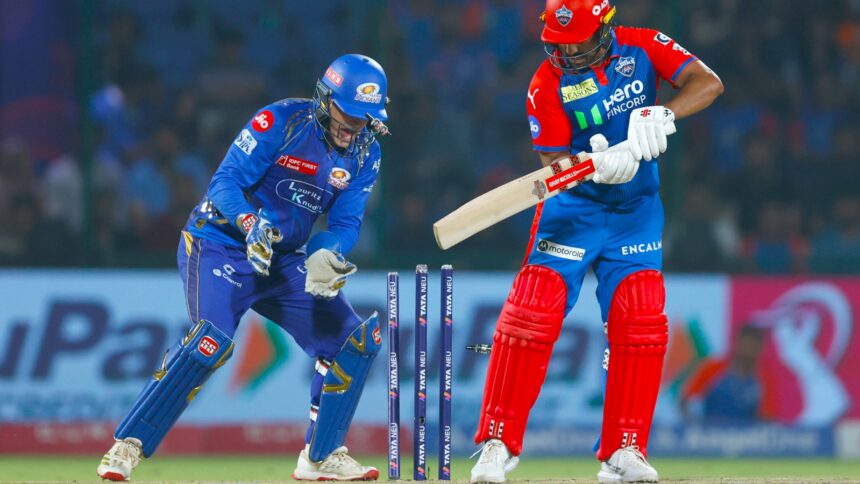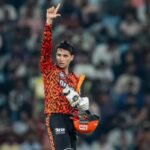Even as Sai Sudharsan and Shubman Gill were plundering the Delhi Capitals’ attack, the body language of the fielders changed. The season that had started so brightly for them was spinning out of their control. It was their best start ever in the IPL, winning the first four games. But since then, their downward spiral has left them facing the scenario of not even qualifying for the playoffs.
It was the game against the on April 13 in that had flipped the narratives for both sides in the campaign. At that stage, Delhi were yet to lose a game, and Mumbai had a solitary win from five games. ’s side defending 205 looked uncomfortable. ’s pristine 39-ball 89 was getting under the skin of Mumbai’s ace bowler . Then came a pearler from Mitchell Santner – a delivery that spun to take the edge of Nair’s bat. But the game was still in control, but the Capitals shot themselves in the foot, losing seven wickets for 58 runs, including three runouts.
From that game on, Mumbai’s championship-winning teams’ DNA started to kick in, where they start the tournaments slowly and pick up the momentum. For Delhi, the lack of a winning pedigree began to take its toll. While Mumbai grew solid, Delhi started to chop and change too much, trying to fix too many things at once.
Mumbai’s pace attack with Jasprit Bumrah, , and Deepak Chahar looked unbreachable at the time of the auction. But Bumrah missed a few games early on because of his injury and both Boult and Chahar were unable to create the early breakthroughs in the powerplay. In the first six games, which include the game against the Capitals, Mumbai picked up six wickets in powerplay, out of which four came against one opposition (). They had also been quite expensive in that phase.
But in the next six games, Mumbai managed to pick up 12 wickets in the powerplay. Mumbai adhered to a method of bowling first, restricting the opposition to below-par totals, and the batting side took care of the runs. And when they had to bat first, batsmen exploded to put up an overpowering score, and the bowlers killed the game with killer blows in the first six overs.
, who had been struggling for runs, began to turn the tide against the , scoring 45-ball 76, since then, with Ryan Rickelton, he has been providing good starts.
Delhi was not tipped as hot favourites ahead of the season but with their collective performances in the initial stage of the tournament, they did pluck out some comprehensive results. But as the tournament went on, Delhi’s dependence on with the bat grew. He is the top scorer for them with 493 (after 12 games), and the next best has been Abhishek Porel (295 runs). Faf du Plessis, the other experienced campaigner in the lineup, has been in and out of the side due to injury, which has not let him settle into the rhythm of the tournament at 40 years of age.
Faf’s injury issues alongside Jake Fraser-McGurk’s poor form forced the Capitals to keep juggling the top three constantly. Rahul, because of his experiences of batting in various positions for both franchise and country, has been able to adapt to it. But the likes of Porel and Karun’s form did fall off a cliff. More often than not, it had to be Rahul and who had to bail them out, with Ashutosh Sharma putting up his hand on a couple of occasions (against and ).
Delhi does have wily spinners, including the captain himself and . However, they lacked a reliable Indian seamer, which they have had in the past with . Mukesh Kumar and Mohit Sharma have failed to impress playing the role of death bowlers, which made the Capitals turn to the second overseas seamer Dushmantha Chameera, who has picked up three wickets from five games and is going at 10.22. Mitchell Starc’s non-return after the break only further takes out the sting in the attack.
With three berths for the playoffs already taken by the , , and , Capitals not only have to fight tooth and nail but also need to turn the tide around for the fourth spot. “We still have two chances. If we win two-on-two, we still have chances to qualify,” said an optimistic Abhishek Porel.








